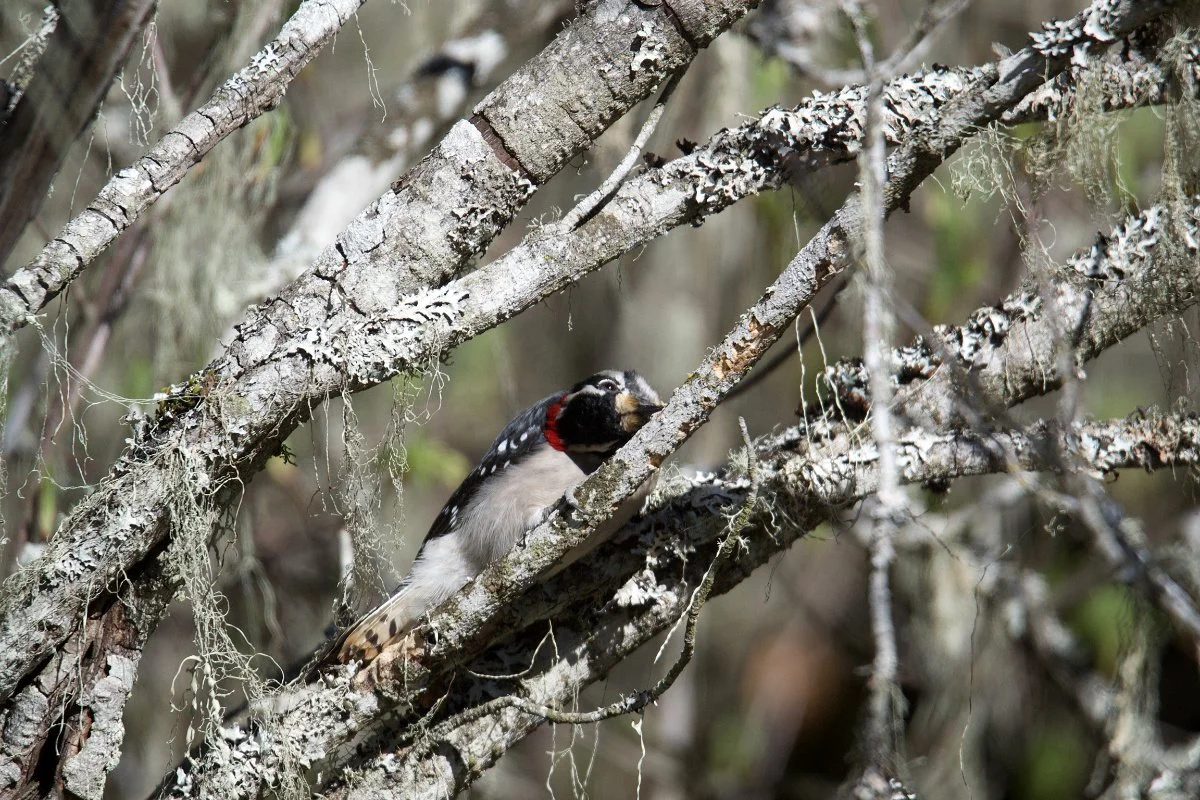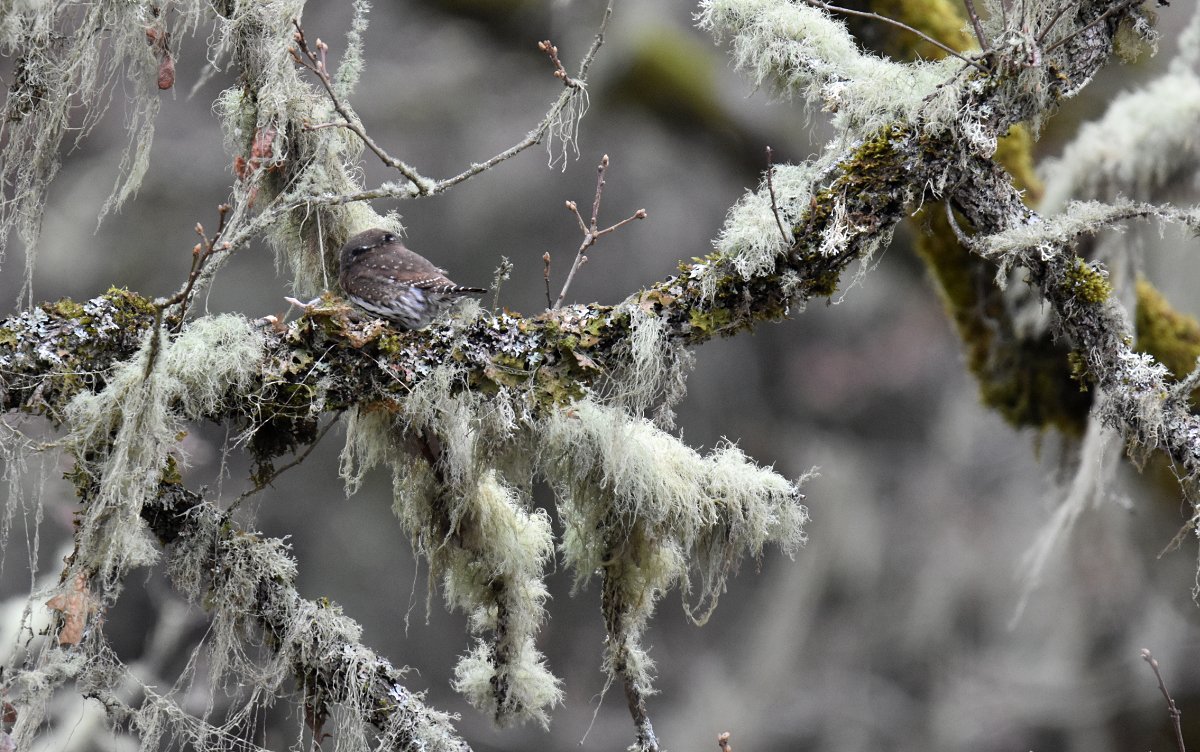The wrentit is part of an Old World family known as Babblers (Family Timaliidae), and it is the only species of this family in North America. It is a plain, brownish-gray bird with a long, rounded tail that is often cocked. It has a short, slightly curved bill and a lightly streaked breast. Males and females, as well as adults and juveniles, look alike.
It prefers to stay hidden in the cover of shrubs and thickets, so it is more often heard than seen. Here is the description of their song by All About Birds: “Wrentits sing a distinctive song reminiscent of a ball bouncing that lasts for about 4 seconds. In males this starts out as 3 to 5 pits followed by an accelerating trill; the ball bounces away. Females also sing but they catch the ball and sing only 3 to 14 pits without the accelerating trill. Both sexes sing at all hours of the day, all year long, although they are more vocal within the first hour after sunrise and early in the breeding season.” Click here to listen on All About Birds.
Breeding season is here, and many birds are beginning to establish territory and trying to attract a partner, both of which Wrentits most likely have already accomplished.
First, “Wrentits may pair up as early as 30 to 40 days old, and they stay with that mate for the rest of their life (All About Birds).”
Second, once a pair establishes a territory, they defend it year-round and rarely leave. In fact, “Wrentits are homebodies and may be the most sedentary bird species in North America. They rarely travel more than 1,300 feet from where they were born (All About Birds).” The pair I see are usually roaming around the wetlands or on the adjacent hillside in the vicinity of the incense cedar exhibit.
Nature is an inexhaustible source of wonder. I look forward to seeing you out there.
Resources
Ehrlich, Paul R., et al. The Birder’s Handbook: A Field Guide to the Natural History of North American Birds: Including All Species That Regularly Breed North of Mexico. Simon & Schuster, 1988.
Peterson, Roger Tory, et al. Peterson Field Guide to Birds of Western North America. 4th ed, Houghton Mifflin Harcourt, 2010.
Sibley, David, et al. The Sibley Guide to Bird Life & Behavior. 1st ed, Alfred A. Knopf, 2001.
Wrentit Overview, All About Birds, Cornell Lab of Ornithology. https://www.allaboutbirds.org/guide/Wrentit/overview. Accessed 15 Mar. 2023.


























